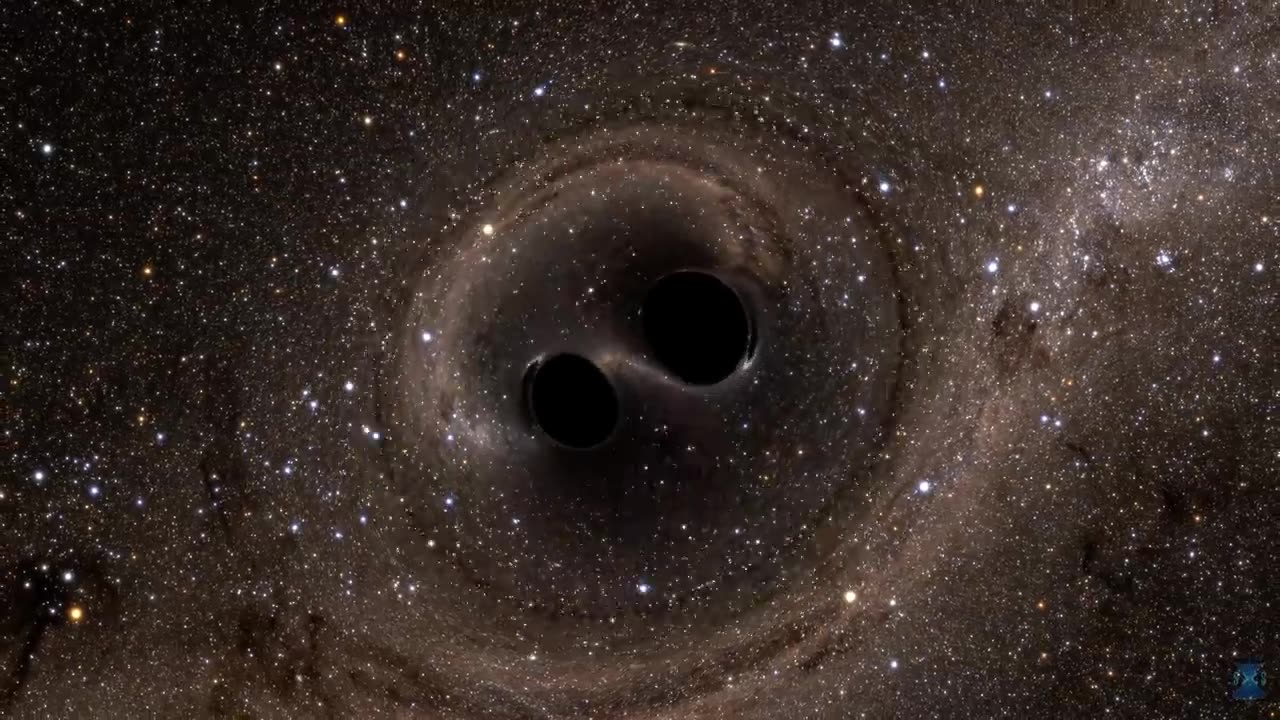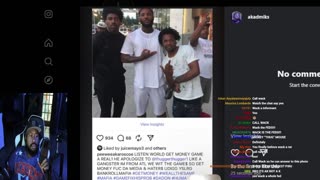Premium Only Content

The Cosmic Collision: When Two Black Holes Become One
A computer simulation vividly depicts the momentous collision of two black holes, a groundbreaking event initially observed by the Laser Interferometer Gravitational-Wave Observatory (LIGO). LIGO's detection of gravitational waves, the ripples in the fabric of space-time, marked the first-ever confirmation of such a cosmic phenomenon. These waves were generated as the black holes spiraled closer together, ultimately colliding and merging. This simulation offers a glimpse of what this merger might look like if we could venture closer in a spacecraft. It was crafted by solving equations derived from Albert Einstein's general theory of relativity, using data collected by LIGO.
The two black holes involved in this merger are approximately 30 times the mass of our sun, with one slightly larger than the other. Time within the simulation has been intentionally slowed down by a factor of about 100, allowing us to witness an event that transpired 1.3 billion years ago.
The stars in the vicinity of the black holes appear distorted due to the incredibly intense gravitational forces these celestial behemoths exert. As the black holes warp space-time, they cause starlight to bend around them, a phenomenon known as gravitational lensing. The prominent ring encircling the black holes, termed an "Einstein ring," emerges from the combined light of stars located within a compact region behind the black holes. Here, gravitational lensing has stretched and molded their images into a circular form.
While the gravitational waves themselves remain invisible to human observers near the black holes, there is one crucial exception. The gravitational waves emanating from the collision, propagating outward toward the small region behind the black holes, perturb the stellar images within the Einstein ring. This disturbance causes the stars' images to oscillate, persisting even long after the collision. Gravitational waves propagating in other directions produce weaker and shorter-lived oscillations throughout the area beyond the ring.
-
 2:12:29
2:12:29
Inverted World Live
4 hours agoWe Are Time Travelers | Ep. 100
65.6K10 -
 2:57:09
2:57:09
TimcastIRL
5 hours agoCorporate Press Refuses To Mention Minneapolis Shooter Was Trans | Timcast IRL
170K88 -
 LIVE
LIVE
Akademiks
4 hours agoWar in RAT-LANTA. Young Thug vs Gunna vs Ralo vs YSL MONDO. Who Will Le Bebe Pick. FINAL CRASHOUT!
1,761 watching -
 1:02:24
1:02:24
Man in America
8 hours agoThe Final Battle: Nanotech, Transhumanism & the War for Your Soul w/ Dr. Ed Group
29.5K3 -
 39:56
39:56
Sarah Westall
2 hours agoUpcoming World Wide Economic Collapse/Deep Recession & What the Big Money is Doing w/ Ed Dowd
21.6K3 -
 2:52:55
2:52:55
Barry Cunningham
3 hours agoIT'S MOVIE NIGHT WITH BARRY!
34.5K23 -
 31:05
31:05
The Why Files
2 days agoPeru's Most Terrifying Mystery | The Face Peelers
40.3K41 -
 1:32
1:32
Gaming on Rumble
11 hours agoWhat is the Rumble Creator Program?!?! | Lvl UP
29.1K4 -
 1:50:49
1:50:49
Flyover Conservatives
23 hours ago9/11 on Steroids: What’s Coming This Fall? - Bo Polny | FOC Show
40.6K7 -
 1:01:28
1:01:28
Precision Rifle Network
9 hours agoS4E27 Guns & Grub - Let's Talk About Gas Guns
21.8K1